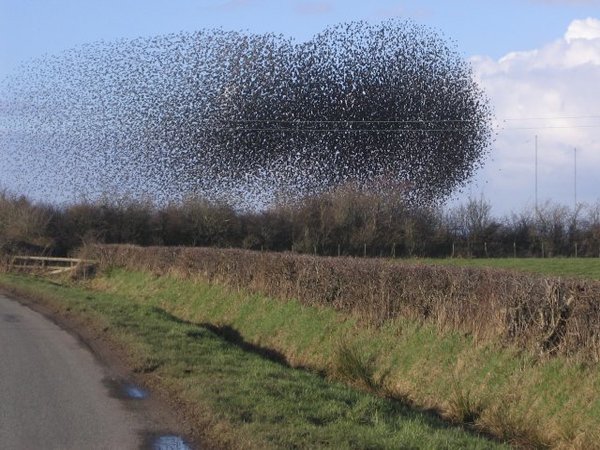There are about 400, probably fresh in on yesterday’s north-easterlies and originally from Russia or Poland. It’s odd to think of them as chimney-pot solitaries in Warsaw or Krakow – where they call them szpak – each producing that quirky wing-flicking spring bluster, or stabbing worm mush into the yellow-lined flowerheads of their begging youngsters.
Here, now, they behave as a single organism. It comes towards me along the edge of the dyke and rolls forward in clusters of 10 or 20. Each sub-flock plumps down and vanishes in turn. Others come on behind relentlessly and, in this way, it arrives before me as a tumbleweed of moving birds. Occasionally two of them, newly vanished, suddenly pop back up, all legs and squabbling beak, then they fall apart and resume the stab-and-prise feeding technique that scientists call Zirkeln.
Routinely, something in the mood of our marsh catches these eastern newcomers unawares and up they blizzard. The flock hurtles forward, then drops into neutral, every wingbeat ceasing briefly, and it stall-glides back to earth before a final flurry of effort as they settle as a dark sheet.

Rarest of all is the moment that several birds perch on the five-bar gate where I can scrutinise them, the young and adults, the males and females. I can admire their emerald iridescence, the violaceous gloss and the newly moulted spotting, which looks somewhere between hail on freshly set tar and stars in the night.
When they go again I sense they will not stop this time. They become mere smudges of darkness far off against the distant willows, and soon they are sheeting into someone else’s field. Mine is all empty and quiet, but for the dour notes of rooks and the sitting gulls, all autumn and morose.










